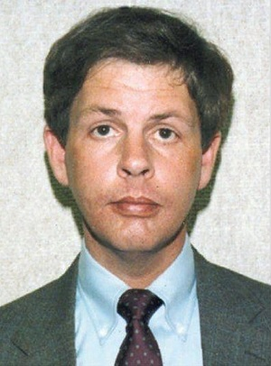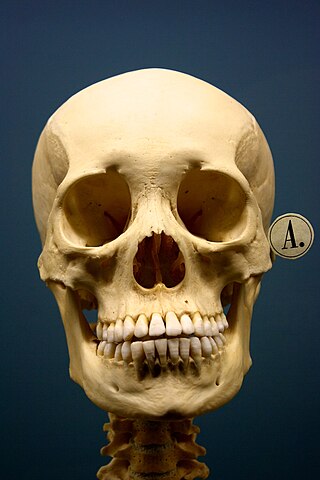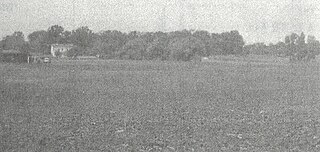
The Native American Graves Protection and Repatriation Act (NAGPRA), Pub. L. 101-601, 25 U.S.C. 3001 et seq., 104 Stat. 3048, is a United States federal law enacted on November 16, 1990.

Ban Chiang is an archaeological site in Nong Han district, Udon Thani province, Thailand. It has been a UNESCO World Heritage Site since 1992. Discovered in 1966, the site first attracted interest due to its ancient red-painted pottery. More recently, it gained international attention in 2008 when the United States Department of Justice, following an undercover investigation begun in 2003, raided several museums for their role in trafficking in Ban Chiang antiquities.

Penn Museum, formerly known as The University of Pennsylvania Museum of Archaeology and Anthropology, is an archaeology and anthropology museum at the University of Pennsylvania. It is located on Penn's campus in the University City neighborhood of Philadelphia, at the intersection of 33rd and South Streets. It also is close enough for Drexel University students to walk or take Septa transportation services. Housing over 1.3 million artifacts, the museum features one of the most comprehensive collections of middle and near-eastern art in the world.

Art theft, sometimes called artnapping, is the stealing of paintings, sculptures, or other forms of visual art from galleries, museums or other public and private locations. Stolen art is often resold or used by criminals as collateral to secure loans. Only a small percentage of stolen art is recovered—an estimated 10%. Many nations operate police squads to investigate art theft and illegal trade in stolen art and antiquities.

The Spirit Cave mummy is the oldest human mummy found in North America. It was discovered in 1940 in Spirit Cave, 13 miles (21 km) east of Fallon, Nevada, United States, by the husband-and-wife archaeological team of Sydney and Georgia Wheeler. He was said to be forty years old when he died. Analysis of the remains showed similarities to North and South American indigenous peoples and in 2016, the remains were repatriated to the Fallon Paiute-Shoshone Tribe of Nevada. The Spirit Cave mummy was one of the first to be dated using accelerated mass spectrometer radiocarbon dating. In turn, its discovery and analysis gave much insight and motivation of further research into the chronology of the western great basin.

Repatriation is the return of the cultural property, often referring to ancient or looted art, to their country of origin or former owners.

Herbert Richard Baumeister was an American businessman and suspected serial killer. A resident of the Indianapolis suburb of Westfield, Indiana, Baumeister was under investigation for murdering over a dozen men in the early 1990s, most of whom were last seen at gay bars. Police found the remains of eleven men, eight identified, on Baumeister's property. Baumeister committed suicide after a warrant was issued for his arrest. He was later linked to a series of murders of at least eleven men along Interstate 70, which occurred in the early 1980s to the early 1990s.

Peter Lars Larson is an American fossil dealer who is head of the Black Hills Institute of Geological Research, which specialises in the excavation and preparation of fossils. He led the team that excavated "Sue", one of the largest and most complete specimens of Tyrannosaurus rex, which was the subject of a legal dispute resulting in its seizure and public auction. In 1996, Larson was convicted of customs violations related to failing to declare money he had brought from overseas as well as taking two fossils from federal land, and served 18 months in prison.

Looted art has been a consequence of looting during war, natural disaster and riot for centuries. Looting of art, archaeology and other cultural property may be an opportunistic criminal act or may be a more organized case of unlawful or unethical pillage by the victor of a conflict. The term "looted art" reflects bias, and whether particular art has been taken legally or illegally is often the subject of conflicting laws and subjective interpretations of governments and people; use of the term "looted art" in reference to a particular art object implies that the art was taken illegally.

Sue is the nickname given to FMNH PR 2081, which is one of the largest, most extensive, and best preserved Tyrannosaurus rex specimens ever found, at over 90 percent recovered by bulk. FMNH PR 2081 was discovered on August 12, 1990, by American explorer and fossil collector Sue Hendrickson, and was named after her.

The Father Sebastian Englert Anthropological Museum is a museum in the town of Hanga Roa on Rapa Nui in Chilean Polynesia. Named for the Bavarian missionary, Fr. Sebastian Englert, OFM Cap., the museum was founded in 1973 and is dedicated to the conservation of the Rapa Nui cultural patrimony.
The National Administration of Cultural Heritage is an administrative agency subordinate to the Ministry of Culture and Tourism of the People's Republic of China. It is responsible for the development and management of museums as well as the protection of cultural relics of national importance.

The repatriation and reburial of human remains is a current issue in archaeology and museum management on the holding of human remains. Between the descendant-source community and anthropologists, there are a variety of opinions on whether or not the remains should be repatriated. There are numerous case studies across the globe of human remains that have been or still need to be repatriated.
Leonardo Patterson is a controversial antiquities dealer who specialises in Pre-Columbian artefacts. He was born to Jamaican parents and was raised in Cahuita, Costa Rica. Patterson started work as an apprentice jeweller, moving on to work as an antiquities middle-man as he gained exposure to a wider range of objects, and graduating to the role of international dealer and collector.

The conservation and restoration of human remains involves the long-term preservation and care of human remains in various forms which exist within museum collections. This category can include bones and soft tissues as well as ashes, hair, and teeth. Given the organic nature of the human body, special steps must be taken to halt the deterioration process and maintain the integrity of the remains in their current state. These types of museum artifacts have great merit as tools for education and scientific research, yet also have unique challenges from a cultural and ethical standpoint. Conservation of human remains within museum collections is most often undertaken by a conservator-restorer or archaeologist. Other specialists related to this area of conservation include osteologists and taxidermists.
The Fifield Site (Pr-55) is located on Damon Run Creek in Porter County, north-western Indiana. It is classified as a late prehistoric, single-component Upper Mississippian Fisher village.
The Huber Site (11Ck-1) is located on Tinley Creek 2 miles west of Blue Island in Cook County, Illinois, near the city of Chicago. It is classified as a late prehistoric site with Upper Mississippian affiliation.
The Hoxie Farm site (11Ck-4) is located on Thorn Creek in Thornton, Illinois Cook County Forest Preserve in Cook County, Illinois, near the city of Chicago. It is classified as a late prehistoric to Protohistoric/Early Historic site with Upper Mississippian Huber affiliation.

The Knoll Spring site (11Ck-19), aka Au Sagaunashke village, is located in the Sag Valley, Palos Hills, in Cook County, Illinois, near the city of Chicago. It is classified as a late prehistoric site with Upper Mississippian Huber affiliation.
Operation Antiquity is one of a series of operations by U.S. federal law enforcement agencies to investigate the smuggling of ancient artifacts from Thailand to the United States since 2002. After several years of secrecy, the case was uncovered on January 24, 2008 by federal law enforcement officers who raided multiple museums, shops, warehouses, and the homes of private art collectors and made headlines in several international media at the time. news.














